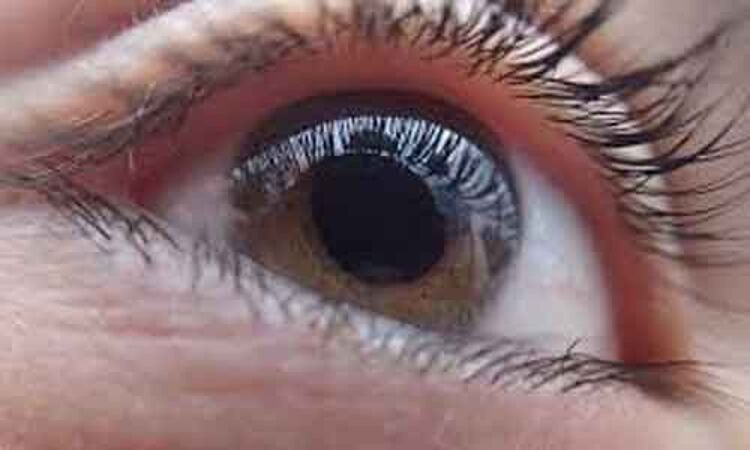- Home
- Medical news & Guidelines
- Anesthesiology
- Cardiology and CTVS
- Critical Care
- Dentistry
- Dermatology
- Diabetes and Endocrinology
- ENT
- Gastroenterology
- Medicine
- Nephrology
- Neurology
- Obstretics-Gynaecology
- Oncology
- Ophthalmology
- Orthopaedics
- Pediatrics-Neonatology
- Psychiatry
- Pulmonology
- Radiology
- Surgery
- Urology
- Laboratory Medicine
- Diet
- Nursing
- Paramedical
- Physiotherapy
- Health news
- Fact Check
- Bone Health Fact Check
- Brain Health Fact Check
- Cancer Related Fact Check
- Child Care Fact Check
- Dental and oral health fact check
- Diabetes and metabolic health fact check
- Diet and Nutrition Fact Check
- Eye and ENT Care Fact Check
- Fitness fact check
- Gut health fact check
- Heart health fact check
- Kidney health fact check
- Medical education fact check
- Men's health fact check
- Respiratory fact check
- Skin and hair care fact check
- Vaccine and Immunization fact check
- Women's health fact check
- AYUSH
- State News
- Andaman and Nicobar Islands
- Andhra Pradesh
- Arunachal Pradesh
- Assam
- Bihar
- Chandigarh
- Chattisgarh
- Dadra and Nagar Haveli
- Daman and Diu
- Delhi
- Goa
- Gujarat
- Haryana
- Himachal Pradesh
- Jammu & Kashmir
- Jharkhand
- Karnataka
- Kerala
- Ladakh
- Lakshadweep
- Madhya Pradesh
- Maharashtra
- Manipur
- Meghalaya
- Mizoram
- Nagaland
- Odisha
- Puducherry
- Punjab
- Rajasthan
- Sikkim
- Tamil Nadu
- Telangana
- Tripura
- Uttar Pradesh
- Uttrakhand
- West Bengal
- Medical Education
- Industry
Higher levels of LDL-C, HDL-C, and total cholesterol tied to increased intraocular pressure

UK: Serum total cholesterol, high-density lipoprotein (HDL) cholesterol, and low-density lipoprotein (LDL) cholesterol was found to be positively associated with intraocular pressure (IOP) in a cohort of 100,000 patients. Further, triglycerides (TGs) were found to be negatively associated. These are the results from a recent study published in the journal Ophthalmology.
"An increase by one standard deviation in the cholesterol levels was associated with an IOP increase of 0.07-0.19 mmHg," Kian M. Madjedi, NIHR Biomedical Research Centre, Moorfields Eye Hospital NHS Foundation Trust & UCL Institute of Ophthalmology, London, UK, and colleagues wrote in their study.
Serum lipids are modifiable, and routinely collected blood tests that are associated with cardiovascular health. Dr. Madjedi and colleagues aimed to investigate the association of commonly collected serum lipid measures (total cholesterol (TC), HDL-C, LDL-C, and triglycerides with intraocular pressure.
For this purpose, the researchers included a total of 94 323 participants of UK Biobank and 6 230 participants of EPIC-Norfolk (mean age 68 years) with data on LDL-C, TG, HDL-C, and TC collected between 2006-2009. The associations of serum lipids with IOPcc were examined using multivariable linear regression after adjusting for lifestyle, demographic, anthropometric, medical and ophthalmic covariables.
The findings of the study were as follows:
· Higher levels of TC, HDL-C and LDL-C were independently associated with higher IOPcc in both cohorts after adjustment for key demographic, medical and lifestyle factors.
· For each standard deviation increase in TC, HDL-C, and LDL-C, IOPcc (mmHg) was higher by 0.09, 0.11, 0.07, respectively in the UK Biobank cohort.
· In the EPIC-Norfolk cohort, each additional standard deviation in TC, HDL-C, and LDL-C was associated with a higher IOPcc (mmHg) by 0.19, 0.14, and 0.17.
· An inverse association between TGs and IOP in the UK Biobank was not replicated in the EPIC cohort.
"The results suggest that serum TC, HDL-C and LDL-C are positively associated with IOP in two UK cohorts and TGs may be negatively associated," wrote the authors. "Future research is required to assess whether these associations are causal in nature."
Reference:
Madjedi KM, Stuart KV, Chua SYL, Luben RN, Warwick A, Pasquale LR, Kang JH, Wiggs JL, Lentjes MAH, Aschard H, Sattar N, Foster PJ, Khawaja AP; Modifiable Risk Factors for Glaucoma Collaboration and the UK Biobank Eye and Vision Consortium. The association between serum lipids and intraocular pressure in two large UK cohorts. Ophthalmology. 2022 Apr 29:S0161-6420(22)00311-6. doi: 10.1016/j.ophtha.2022.04.023. Epub ahead of print. PMID: 35500606.
Dr Kamal Kant Kohli-MBBS, DTCD- a chest specialist with more than 30 years of practice and a flair for writing clinical articles, Dr Kamal Kant Kohli joined Medical Dialogues as a Chief Editor of Medical News. Besides writing articles, as an editor, he proofreads and verifies all the medical content published on Medical Dialogues including those coming from journals, studies,medical conferences,guidelines etc. Email: drkohli@medicaldialogues.in. Contact no. 011-43720751


